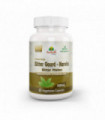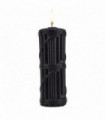Bael or wood apple also known as Bilva in Sanskrit, Bilva Pazham in Tamil, Bilva or Maredu Phalam in Telugu and Bengal Quince is a native to India, Malaysia, Thailand, Sri Lanka and Southeast Asian countries. Bael that goes with the botanical name Aegle marmelos is a middle-sized tree, with slender branches, pale brown bark that often oozes an edible gum. The leaves of bael are quite unique, trifoliate in shape which means each leaf consists around 4 to 12 pairs of side veins adjoining at the margin. The Bael fruits are globose in shape, with a hard exterior and it doesn’t split open even upon ripening. The raw fruits look greenish grey while the woody exterior turns yellow upon ripening. The ripened fruit contains aromatic pulp with around 10 to 15 seeds, enclosed in a sac filled with natural adhesive.
Bael fruits are a power punch of various nutrients like beta-carotene, protein, riboflavin and vitamin C. It is loaded with vitamin B1 and B2, thiamine, riboflavin, niacin, carotene and possesses good amounts of minerals like calcium, potassium, fiber and good fats. These fruits are also popular for antioxidant, anti-inflammatory and laxative properties and it has been in use for its medicinal and therapeutic properties in Ayurveda, Siddha and other forms of alternate medicine for thousands of years.






















